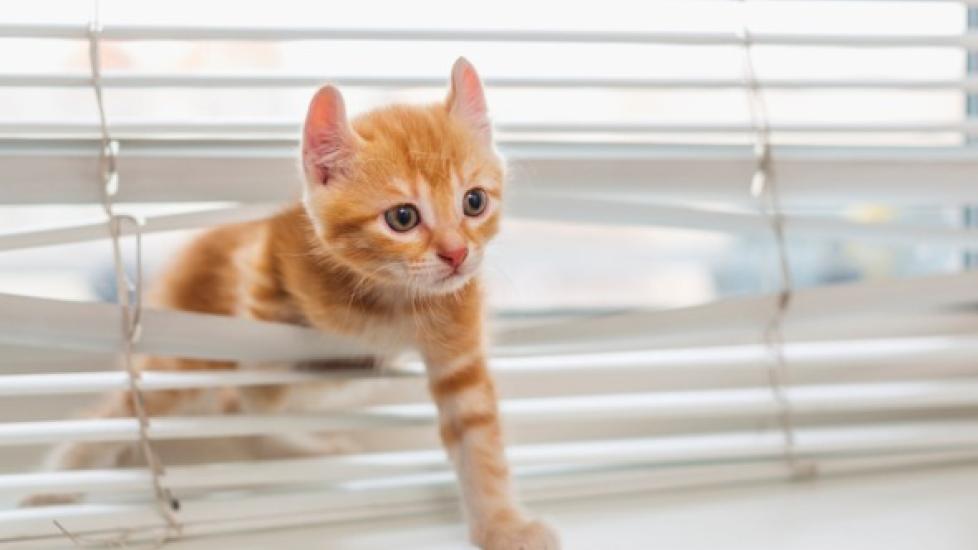15 Kitten-Proofing To-Do’s Before Bringing a Kitten Home
Reviewed and updated for accuracy on December 2, 2019 by Dr. Hanie Elfenbein, DVM, PhD
Bringing a new kitten home and watching them adapt to family life is fun and exciting. But before the new addition is allowed to roam the house freely, you’ll need to do some kitten-proofing.
So where do you start? Kittens can get into tons of trouble if you haven’t checked your home for certain safety issues. Here are some tips to make sure your kitten can enjoy their new home safely.
Kitten-Proofing Checklist
Check for these safety hazards and take the proper steps to make your home safe for your kitten.
-
Stow away dangling or exposed electrical cords that are tempting for kittens to chew and pull on. Wrap up the cords in protective tubing or covers that are made for pet-proofing.
-
Keep toilet lids closed, as kittens can drown in toilet bowls. You can use the same toilet lid locks that are designed to keep children safe.
-
Put a gate across open stairways where kittens can tumble and fall down the stairs.
-
Pull up and secure any dangling blind cords or curtain cords because kittens can get twisted up and strangle or ingest the string. Blind cord wraps and wind-up devices can keep them out of reach.
-
Make sure every garbage can has a lid, preferably one that locks. Any trash is bad for kittens to get into, but bones and string (even dental floss) are especially bad because they can cause intestinal problems for kittens.
-
Secure sewing, knitting and crocheting materials like needles and thread. Kittens may poke themselves or eat the thread, which can knot up inside their intestines and cause a blockage.
-
Pick up rubber bands, as kittens see them as fun toys, but they can wrap the intestines around themselves.
-
Put away plastic wrap and plastic bags. Kittens can eat these or become trapped, tangled, strangled or suffocated.
-
Check for Styrofoam from food or drink containers or packages (especially packing "peanuts") which the kitten may chew and eat.
-
Do a safety audit of potential cat toys or those that you might have already bought. Many cat toys have parts that can be easily removed and swallowed. Make sure that the toys you give your kitten or that you leave out are kitten-safe.
-
Use kitten-safe holiday decorations and put away unsafe holiday items. Dangerous decorations for cats include tinsel, small, sharp and/or glass ornaments, holly and mistletoe, Christmas lights, candles, gift wrap and string, etc. For more information, see our holiday safety article.
-
Always locate your kitten before opening and closing furniture. Reclining chairs, sleeper sofas and pullout beds like daybeds have mechanisms that can injure or crush a kitten that has crawled inside.
-
Remove indoor plants that may be toxic to your inquisitive kitten.
-
Store away all cleaning products and other chemicals and place child locks on cabinets.
-
Check open refrigerators, dishwashers, microwaves, ovens, washers, dryers for inquisitive kittens before shutting doors and/or turning on these appliances.
Here’s a handy list of products you might need to get:
-
Electrical cord covers or tubing
-
Toilet lid locks
-
Stairway pet gate
-
Blind cord wraps
-
Garbage cans with locking lids
-
Kitten-safe toys
-
Cabinet child safety locks
Featured Image: iStock.com/AlbinaTiplyashina
